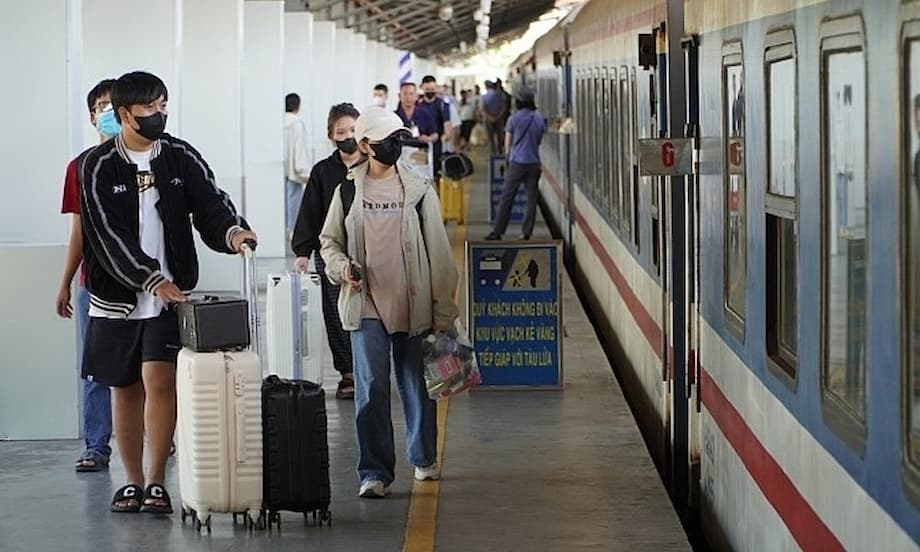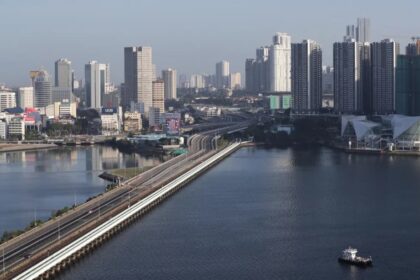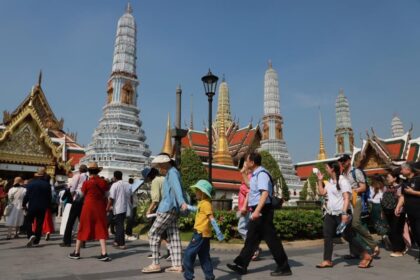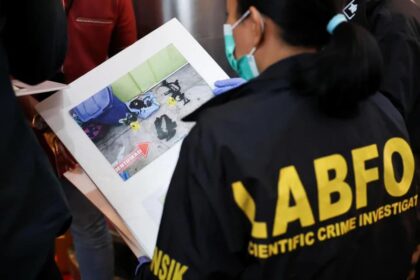Why Vietnam is racing to build a rail talent pipeline
Vietnam is moving quickly to build a large, highly skilled rail workforce as it readies the most ambitious rail buildout in its modern history. A draft national program led by the Ministry of Construction sets a target to train more than 140,000 people by 2045, aligned with a sweeping plan that includes a North South high speed line and new strategic corridors in the north. Officials warn that without a deep bench of engineers, technicians, operators and managers, the country could remain dependent on foreign experts for design, construction and operations.
- Why Vietnam is racing to build a rail talent pipeline
- What the national training plan promises by 2030 and 2045
- How many workers will Vietnam actually need
- Building skills that modern railways demand
- Who is training whom, at home and abroad
- Funding, governance and incentives
- Industry and economic stakes beyond transport
- Risks, bottlenecks and how Vietnam plans to reduce them
- Timeline and next milestones
- Key Points
The government has approved nine new railway routes, upgrades to seven others, and 28 urban lines for Hanoi and Ho Chi Minh City. The combined pipeline adds more than 1,100 kilometers by 2045. The flagship is the North South express railway, a line of about 1,540 kilometers with a design speed of 350 kilometers per hour. Lawmakers endorsed the investment policy in late 2024. Groundbreaking is targeted for 2027. A second priority is the Lao Cai to Hanoi to Hai Phong route, a 420 kilometer corridor that will link border trade with northern ports and share capacity for both passengers and freight. These projects aim to knit together fast growing cities, ease road congestion, and shift more freight onto cleaner rail.
What the national training plan promises by 2030 and 2045
The draft program covers two phases. Between 2025 and 2030, about 35,000 people would be trained across rail specialties tied to high speed, electrified national lines, and urban metro systems. The mix includes 1,000 postgraduate students, 14,000 university graduates, 11,000 college trainees, and 9,000 intermediate level workers. About 12,000 of these learners would focus on operations and maintenance, split between national and urban rail systems. Disciplines run from construction engineering and track to electrification, signaling, transport economics, and rail operations.
From 2031 to 2045, another 105,000 people would be trained. The emphasis shifts toward research, technology transfer and innovation, with a goal to assemble a core group of about 5,000 specialists dedicated to mastering key technologies. The plan also calls for stronger ties between universities, industry and government, modern laboratories and simulators, and incentives to attract and retain talent in engineering, management and research. Funding is designed to blend state support, project budgets, enterprise programs and international assistance. Training costs would be included within the budgets of major lines so that operators and maintainers are ready before service opens.
How many workers will Vietnam actually need
Training targets only tell part of the story. Estimates from the Vietnam Railway Authority indicate that labor demand between 2025 and 2030 could reach about 338,000 workers across the sector. That figure includes project management teams, consultants, and large construction crews. Roughly 9,200 project managers and close to 13,000 consultants will be required as different sections move into design and execution. The construction phase for high speed rail alone could need 70,000 to 80,000 people, among them thousands of engineers, project managers and supervisors. Once lines start service, an additional 20,000 highly skilled workers would be needed for operations.
These figures are not in conflict with the 35,000 people targeted for training by 2030. The national program concentrates on specialized rail skills and on building a pipeline of technical staff who can absorb technology transfer and then lead operations and maintenance. The broader figure for labor demand includes general and specialized construction workers employed by contractors across civil works, track laying, and structures such as bridges, tunnels and stations. Contractors will draw from the existing construction labor market, while the training program focuses on the rail specific skills that Vietnam lacks today.
Building skills that modern railways demand
High speed and modern electrified railways require a set of skills that go beyond conventional diesel lines. Civil engineering teams design and build viaducts, tunnels and embankments with precise tolerances for smooth, safe running. Track engineers ensure subgrade stability, ballast quality, slab track systems where needed, and exact alignment. Electrical specialists design and maintain traction power, overhead catenary lines and substations. Signal and communications engineers implement and sustain train control, interlocking, communications based train control for metro lines, and transmission networks.
Operations and safety teams make the network work in real time. Dispatchers orchestrate train movements from control centers. Drivers and guards require rigorous training and simulation to meet safety standards at high speeds. Maintenance staff handle rolling stock, track, catenary, and signaling, with predictive methods and condition monitoring. Digital competencies are now just as vital. Building information modeling, digital twins, and data analytics support design coordination and lifecycle asset management. Students and mid career professionals will need exposure to these tools alongside core engineering. Strong safety culture, human factors, and emergency response training are critical at every level.
From classroom to live rail assets
Modern rail training blends theory, simulation, and hands on practice. The national plan envisions universities and specialized colleges equipped with labs for power electronics, control systems, and signaling. Simulators for driving, dispatching and maintenance will help learners master procedures before they enter the field. Partnerships with operating railways allow students to gain experience on construction sites, in depots, and inside control rooms. Certification aligned with international standards will help the sector scale without compromising safety.
Who is training whom, at home and abroad
Vietnam Railways Corporation has already started pilot programs with foreign partners. On June 10, the Railway College launched its first high speed training course in collaboration with Chinese railway institutes in Liuzhou and Kunming. More than 200 workers and technicians from maintenance and signaling units began a two phase program that includes three to four months of theory in Vietnam taught by visiting experts, followed by around three months of hands on practice in China. The first subjects are railway infrastructure and railway signal information, with plans to expand into train driving and traffic control.
Government agencies are sending staff for instruction in construction techniques and project management. Private contractors are also investing in people. Vietnamese groups have sent engineers to learn tunnel boring machine operations and advanced track construction, while setting up production lines for sleepers and track. The Ministry of Construction and several universities, including Da Nang University of Science and Technology, are coordinating new programs for rail and metro construction specialists. Policy ideas on the table include joint degrees with overseas universities, scholarships for priority subjects, shared labs, and a dedicated academy for high speed rail to coordinate standards and curricula nationwide.
International industry partners are circling the market and offering training and technology transfer. Meetings with South Korean firm Hyundai Rotem focused on rolling stock production, control systems and the potential to localize maintenance and component manufacturing. French group Alstom has expressed interest in cooperation that includes training and sharing expertise. Japanese support builds on decades of ties in transport. Chinese institutions are already providing courses and field experience. These relationships are a way to import know how while growing domestic capability.
Funding, governance and incentives
The training roadmap will require sustained funding and careful coordination. A proposal under review sets aside more than 40.5 trillion dong, about 1.6 billion US dollars, for workforce training and upskilling through 2030. The approach blends state budget support for public institutions and officials with enterprise funded training for company staff. Learners and employers are expected to share some costs. Training expenditures will be embedded within the budgets of major projects so that teams are ready when assets go live. Public private partnerships and cooperation with international development banks can supplement domestic funding for facilities, labs and faculty development.
Vietnam also needs policies that make the rail sector attractive for top students and mid career professionals. That includes competitive pay scales for high demand skills, clear career paths in operations and engineering, and scholarships for priority disciplines such as signaling, power electronics, materials and metallurgy. Industry bodies have encouraged joint ventures that give Vietnamese contractors a large share of work, and targets for the proportion of local workers on project sites. The goal is not to exclude foreign partners. It is to ensure that collaboration builds capacity in Vietnam and creates lasting careers in the rail sector.
Industry and economic stakes beyond transport
High speed rail is a transport project, but it is also a major industrial program. The Ministry of Construction studied cases from Japan, France, Germany, Italy, South Korea, China and Spain. The cost of creating a full domestic high speed industry is very high. It requires large markets, deep expertise in metallurgy, machine tools and control systems, and a broad ecosystem of suppliers. Vietnam does not yet have the scale to replicate that in full. Even so, leaders see a rare chance to move up the value chain. The near term focus is on assembly of locomotives and carriages for national and urban lines, plus mastery of operations, maintenance and repair.
Skilled people make that shift possible. Local suppliers can grow in areas such as electrical cabinets, harnesses, interior fit out, civil structures, and maintenance tooling. Over time, technology transfer and joint ventures can deepen localization in rolling stock components and signaling subsystems. Transit oriented development around stations can create new jobs in construction, real estate, retail and logistics. One private consortium has proposed combining rail investment with large station area developments to share risk and raise non fare revenue. If structured well, these projects can accelerate urban renewal, raise productivity, and spread the benefits of rail beyond the right of way.
Risks, bottlenecks and how Vietnam plans to reduce them
The biggest near term risk is a shortage of qualified engineers and technicians, especially in disciplines that have struggled to recruit students for years. Materials science and metallurgy programs in particular have seen very low enrollment. Bridge and road programs have also faced recruitment challenges. Without more students and more faculty, universities cannot scale up intake or sustain specialized labs. The training plan addresses this with scholarships, targeted outreach, improved curricula and partnerships that give students clear job prospects.
Standardization is a second challenge. Vietnam needs common competency frameworks and certifications for drivers, dispatchers, signal maintainers, catenary technicians and civil inspectors. This will help agencies and private operators hire consistently and maintain safety as new lines open. Language training is also crucial during technology transfer. Many standards and manuals are in English, Japanese, Korean or Chinese. Safety culture needs constant reinforcement, from classroom to control room. Finally, schedule pressure will be intense. Early and steady investment in people reduces the risk of delays that can arise when projects rely too heavily on scarce foreign experts.
Timeline and next milestones
Milestones are coming into focus. The National Assembly approved the investment policy for the North South project in late 2024. Preparations target a 2027 groundbreaking. In the north, the Lao Cai to Hanoi to Hai Phong line is expected to start construction by late 2025. Vietnam Railways College launched its first high speed training course in June, with plans to expand enrollment and disciplines in the months ahead. By 2030, the government aims to have trained about 35,000 people for rail, with the first wave ready to support early construction packages, testing and commissioning for urban lines, and initial sections of national routes. By 2045, the target is a 140,000 strong rail workforce and a core research group of about 5,000 people capable of mastering critical technologies.
Investor selection for key packages will proceed in parallel with workforce programs. International interest is strong, including partners ready to provide training, technology transfer and finance. The mix of public investment, enterprise training, and foreign cooperation is designed to build capabilities that last beyond the first lines. If Vietnam can maintain momentum, train enough specialists, and keep them in the sector, it will have the talent to build, operate and improve a modern rail network that connects cities, ports and borders.
Key Points
- Vietnam plans to train more than 140,000 rail professionals by 2045, with 35,000 targeted for 2025 to 2030.
- The buildout includes nine new lines, seven upgrades, and 28 urban rail projects adding over 1,100 kilometers by 2045.
- High priority corridors are the North South express line and the Lao Cai to Hanoi to Hai Phong route.
- Between 2025 and 2030, sector labor demand could reach about 338,000 workers across project management, consulting and construction.
- About 12,000 trainees in the first phase will focus on operations and maintenance for national and urban rail.
- Partnerships with Chinese, Korean, Japanese and French institutions will support training and technology transfer.
- A proposed 40.5 trillion dong budget supports training and upskilling, with costs embedded in project budgets.
- Universities plan new programs, shared labs and joint degrees, while industry pushes for clear certification standards.
- Private groups are linking rail investment with station area development to broaden economic benefits and raise non fare revenue.
- Officials aim to build a core of about 5,000 researchers and specialists by 2045 to reduce reliance on foreign expertise.












